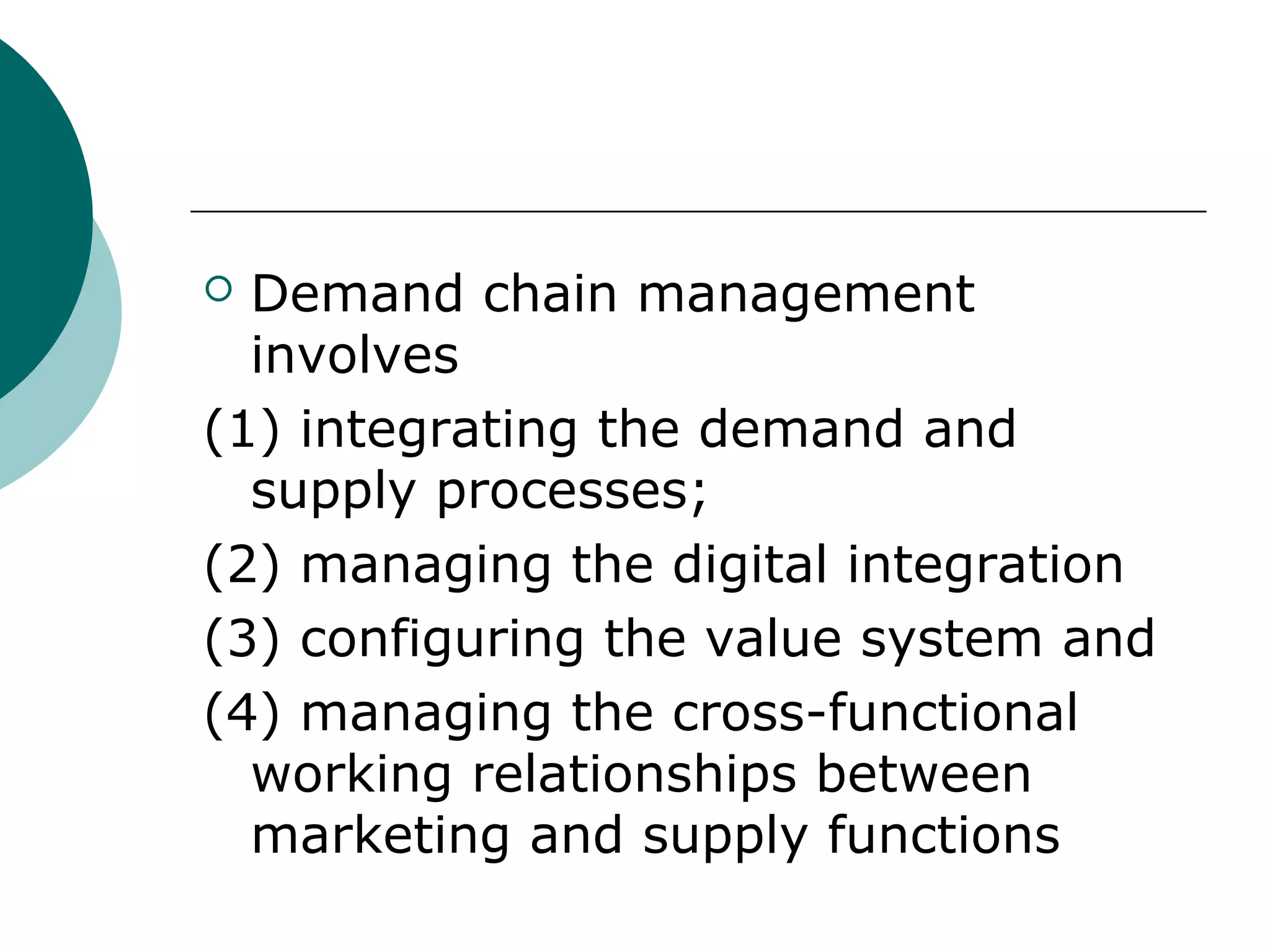Demand chain management aims to integrate marketing and supply chain functions to create customer value. It involves:
1) Integrating demand and supply processes to ensure customer needs are met.
2) Managing digital integration and cross-functional relationships between marketing and supply.
3) Configuring the value system to design customer-centered supply chains that meet differing customer needs.

















